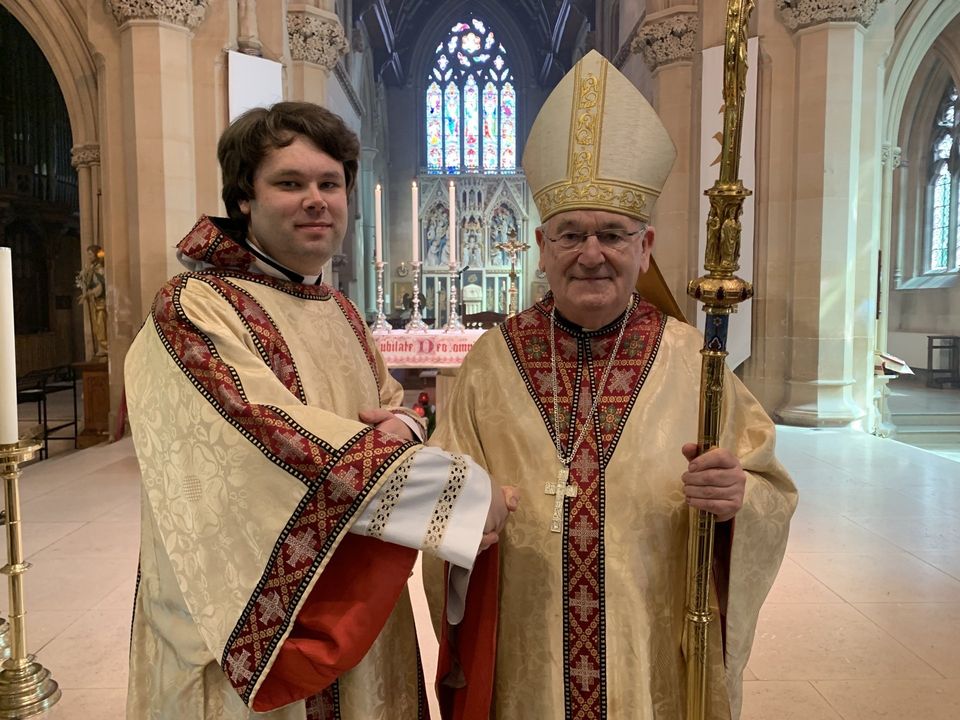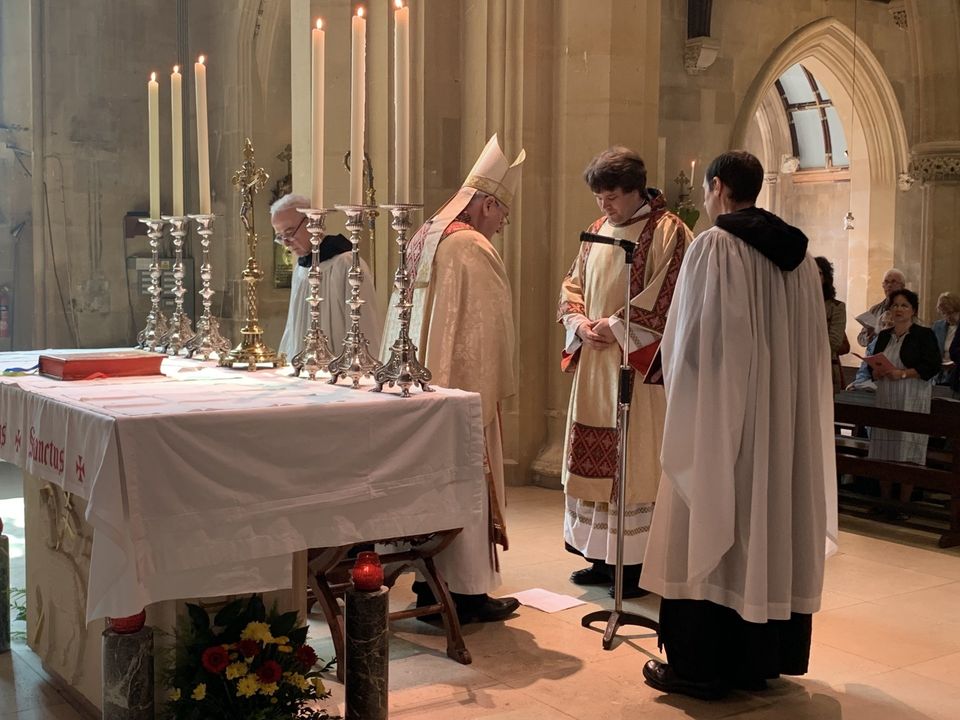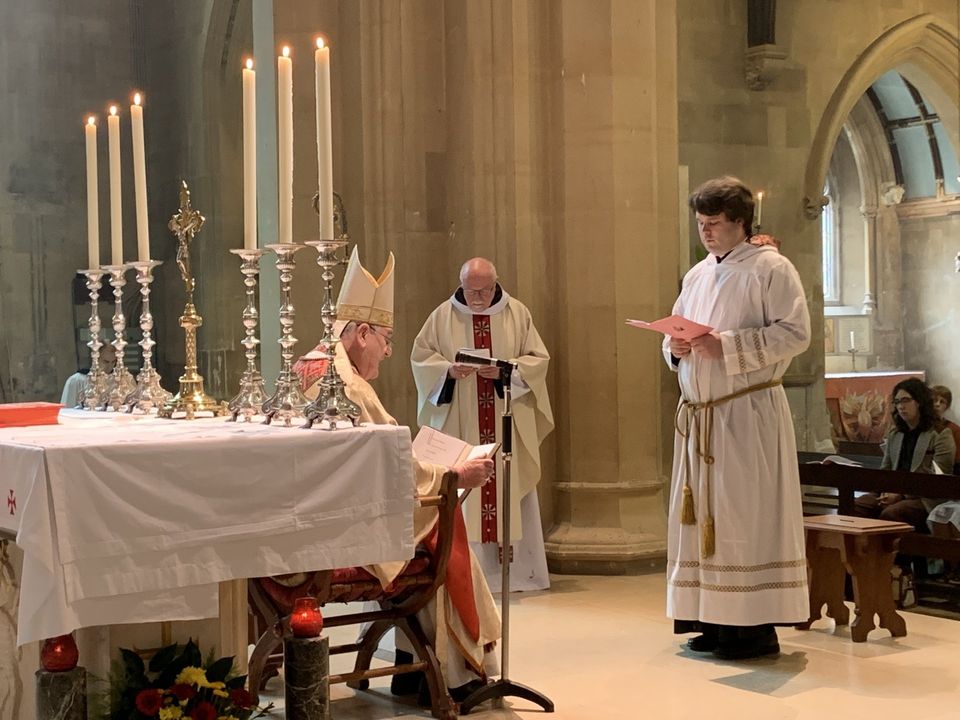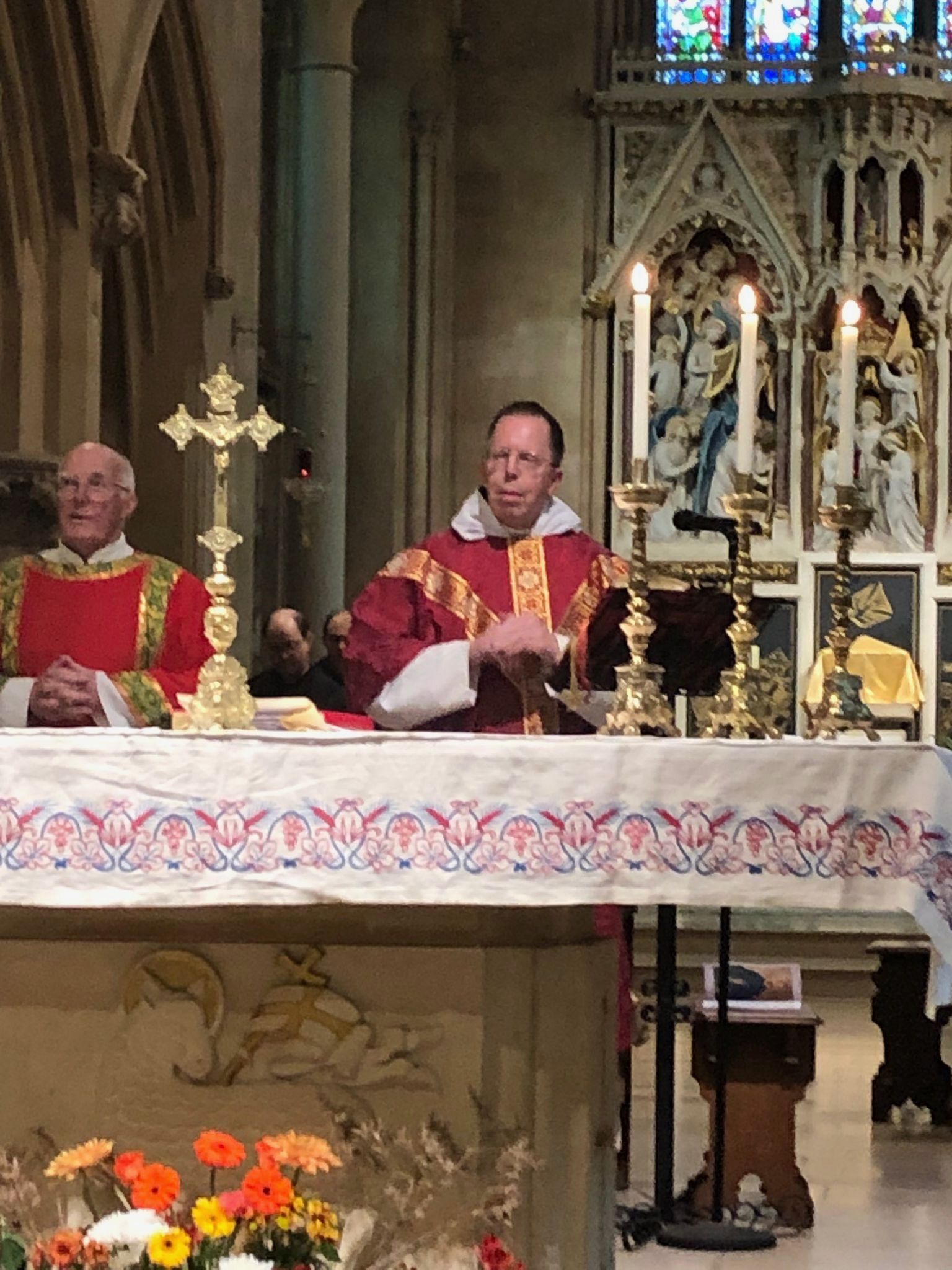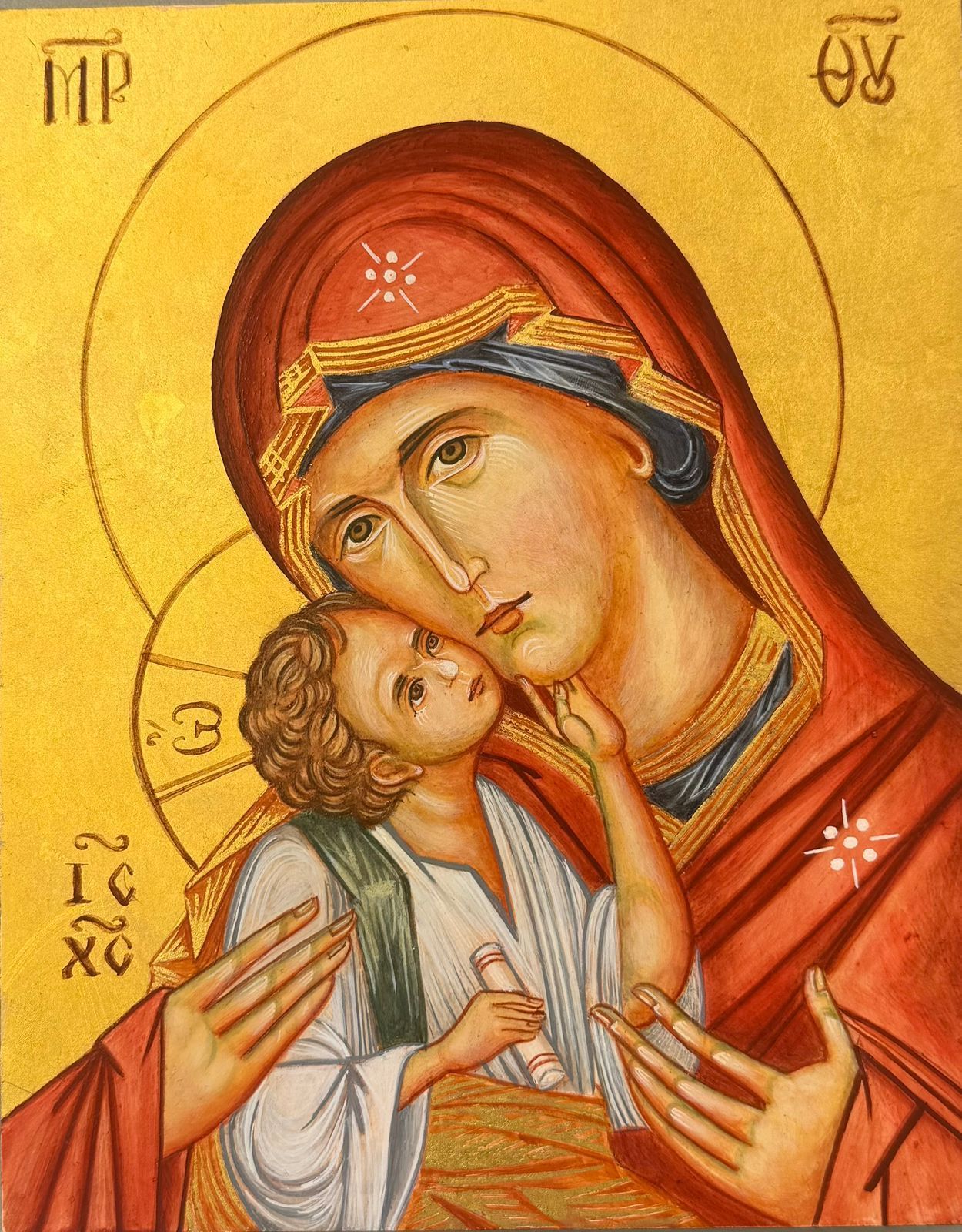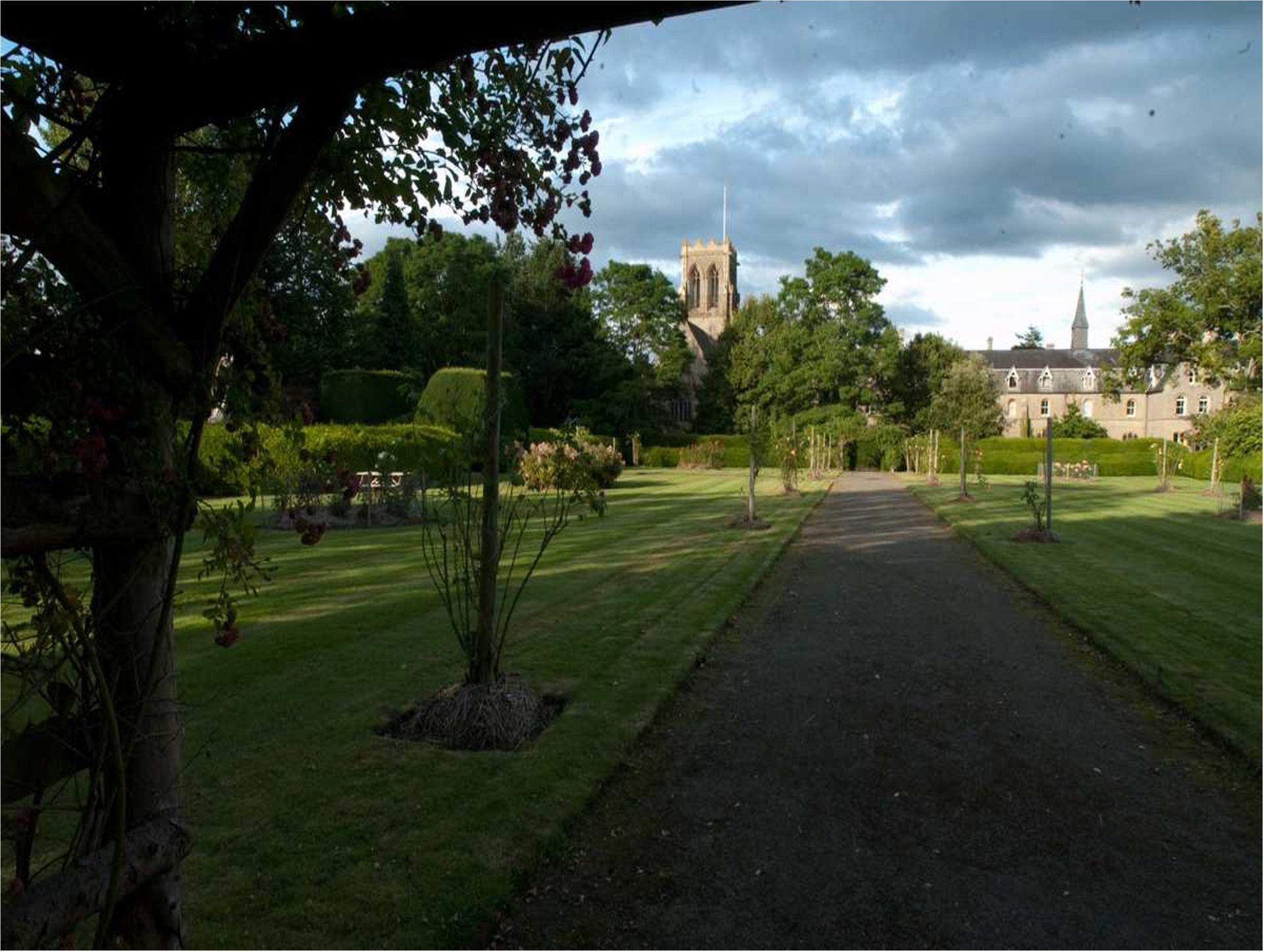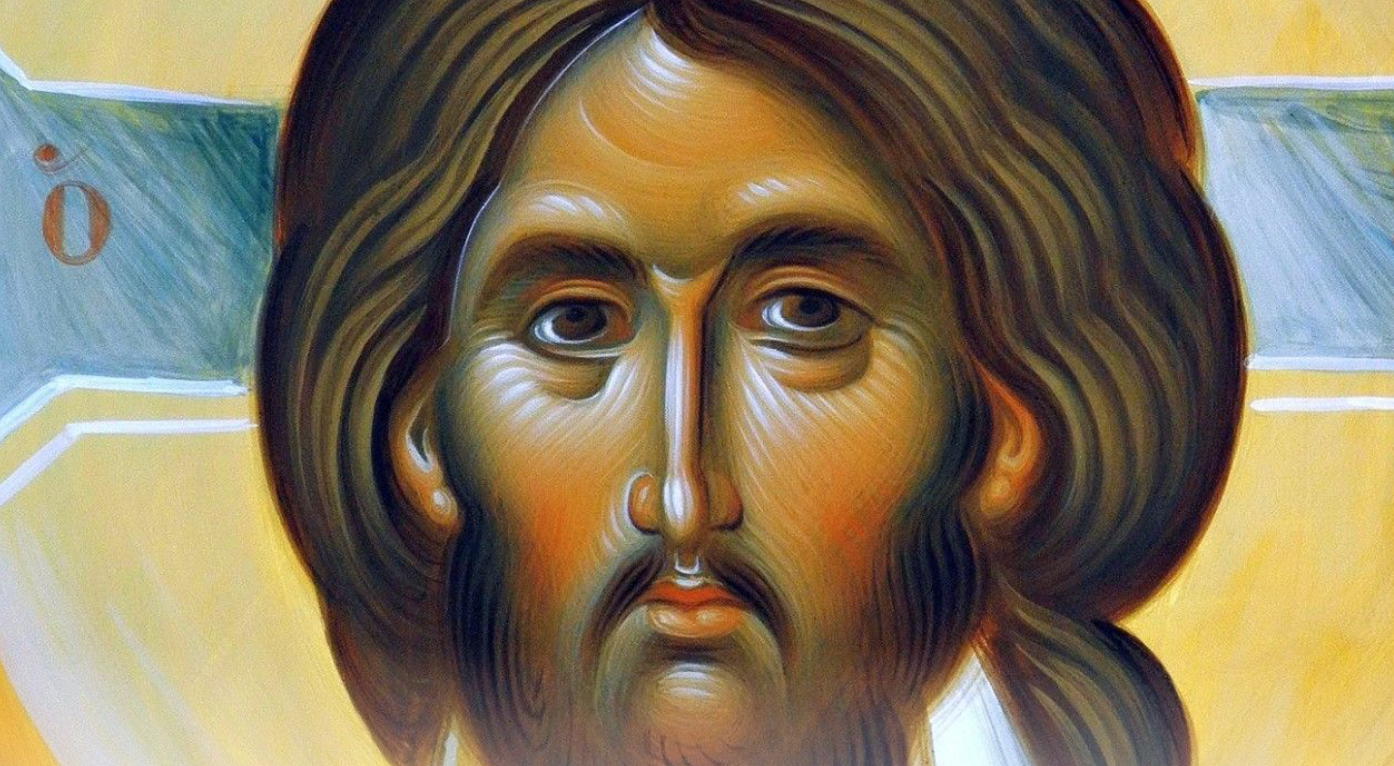Ordination of Dom Augustine to the Diaconate
Br Augustine Primavesi, who comes from our
parish of Abergavenny, was ordained a deacon by Archbishop George Stack on the feast of the Dedication of the Abbey Church. There
was a good crowd for the occasion.Br Augustine is still studying theology in Rome
and returns at the end of the month. Congratulations to him and his family.
Archbishop George's homily is given below.
When I was Administrator of Westminster Cathedral twenty five years ago, I would often accompany Cardinal Basil Hume to greater ceremonies in parishes and beyond. In particular, I would be present at Priestly Ordinations and,occasionally,the Consecration of Churches. The joyful and complicated nature of these liturgies often needed a helping hand!. During his homily at the consecration of a church the Cardinal would say two things which have remained with me always: “A church is a place not just in which we worship God, but with which we worship God”. And another “Only the best is good enough for God”. That is why we invest so much time,energy and money into the liturgy and decoration, and music and pastoral outreach in our parishes. The Entry Antiphon for Mass expresses this so well “Locus Terrribilis Est. This is an awesome place. It is none other than the House of God”.
I am always moved when I read at the entrance to a number of Anglican churches the words:
Enter this door
As if the floor within was beaten gold,
And every wall of jewels, all of wealth untold.
As if a choir in robes of fire were singing here within;
Nor shout,nor rush, but hush…for God is here. (Spencer Kimball)
Writing of his own parish church, T.S. Eliott said:
“You are not here to verify,instruct yourself, or inform curiosity or carry report.
You are here to kneel where prayer has been valid”. (Four Quartets)
That is why this anniversary of the dedication of the Abbey Church of St. Michael is kept as a solemn feast. The walls of this Abbey Church have been soaked in prayer by previous generations and this continues today. The ordination to the Diaconate of Brother Augustine Primavesi on this feast will add to the “splendour of holiness”. The Benedictine charism motto “laborare est orare” are the two foundation stones for the celebration of the liturgy and the service of the People of God. The “cantus firmus”, the plainchant singing of the office and the missionary aspect of the English Benedictine Congregation bring together the two worlds of contemplation and action. “Only the best is good enough for God” as Cardinal Hume used to say.
The development of the order of deacon in the church is well chronicled. The stories of Stephen and Philip in the Acts of the Apostles, particularly chapter 7. At the beginning of the third century,an ex slave named was called by Pope Zephyrinus as a deacon to take charge of the catacombs on the Appian Way. A bigger job than you might imagine! Much Christian life revolved around the catacombs. They were the hub of community life. So many Christians to be buried – not all killed in persecution despite popular misconceptions. Callistus must have done a good job, because when pope Zephyrinus died, he was elected Pope in his place.D eacon to Pope. Not a bad career move! He was martyred in the 222A.D. Not a career path to be recommended for our new deacon!
And we all
know the story of the deacon Laurence.The Emperor Valerian forbade the
Christians to visit the catacombs. Pope Sixtus II disobeyed this ban and was arrested and
executed for conducting a liturgy in the Catacomb of Callistus. Four deacons
were martyred with him. Legend has it that the Emperor then turned on Laurence
and demanded he collect all the treasures of the Church and hand them over to
him.Laurence gave away all the gold and silver of the Church and divided the proceeds
dedicating them to the care of the
poor.He then brought the waifs and strays of Rome to the Emperor. “These are
the treasures of the Church” Laurence said. Not surprisingly, he paid the price
for this in his martyrdom the details of
which make gruesome reading.
Why this
magical mystery tour of the diaconate in the early Church? Not just that
Brother Augustine can retrace the steps of these great martyr saints whilst he
is studying in Rome. But because in their faithfulness to the gospel, in their service of the liturgy, in their
dedication to the service of the poor, these deacon martyrs give a pattern of
ministerial life which is as valid in the changed circumstances of our day as
it was in the early life of the Church.
The signs and symbols of this ordination link us with those apostolic times. The Laying on of Hands and the Prayer of the Church. The prostration of the candidate: “Lord I am not worthy”. Brother Augustine will be comforted and supported by the prayers of the saints “Saints of God, come to our aid”.
Augustine will be clothed in the beautiful garment of a deacon – I imagine one of the best you have at Belmont. “Only the best if good enough for God”. Not just a sign of grandeur and dignity or power, but to cover up human weakness and remind him he is not acting on his own authority but on the authority of Christ and his Church. He will be given the Book of the Gospels from which he is directed, ordered, ordained to preach. But all of us who are ordained will tell our new deacon that there is more to preaching than standing at the lectern or the pulpit or sitting in a bishop’s chair. He will need to heed the warning of the Scottish poet Edwin Muir who says “…the word made flesh is here made word again”. Pope Francis also has a great deal to say on the authenticity of the preacher and what is preached. (Evangelium Gaudium nn.69-79). Deacon Augustine is called to preach not just a spoken word, but the living word of God which he will continually discover afresh in his own life. That is why he will take to heart the words of the ‘Traditio’ as the gospels are given to him:
“Receive the Gospel of Christ
Whose herald you now are.
Teach what you believe
And practice what you teach”.

